Early this year I was able to obtain a used 1967 edition of the book The Life of the Pond by William H. Amos. This is a hardcover edition with 232 pages of the best and most informative reading that I have encountered in the area of fresh water biology as it relates to the study of ponds. The Life of the Pond is divided into five sections. The sections are executed in such a way that they build upon each other creating a well-integrated and cumulative presentation. The information is written in a style that flows easily without depriving us from the main scientific aspects of pond biology. Text is complemented with superb illustrations and photographs following the same logical and integrated pattern of the whole book.
The first section, The Pond World is an excellent description on the nature of the pond and its life cycle from its origins, maybe as a left over of a meandering river (see figure 1),

Figure 1. A pond left over from a meandering river.
to its final years as a marsh. Pond ecology including energy transitions among the different organisms and plants is also covered in this section and serves as an excellent introduction to the mechanism of energy transactions in ecological niches. In the final pages of this chapter, and also accompanied with excellent photos (see figures 2 and 3), you will find a superb rendition about the pond during its prime years ending with the death of the pond.

Figure 2. A pond in its prime.
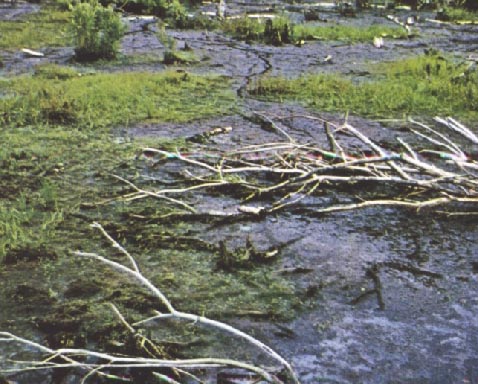
Figure 3. The final days of the pond.
From the coming of spring to the arrival of winter is the theme of Seasons and Days the second section of the book. The changes that take place in a pond during the yearly seasons (see figures 4 and 5) are interwoven here with sections on the life cycle and behavior of specific denizens of the pond like dragonflies, birds and frogs. I specifically enjoyed reading about the territorial flight pattern of the dragonfly and how it differs from territorial to feeding behaviors. This chapter also includes the day to night transitions that occur among the residents of the pond world.
The different adaptations developed by animals and plants of the pond is the theme of the third section Living in Water. A diagram on the evolutionary paths to the pond introduces this chapter with a well-developed explanation on how the plants and animals of the pond evolved from ancient sea organisms.
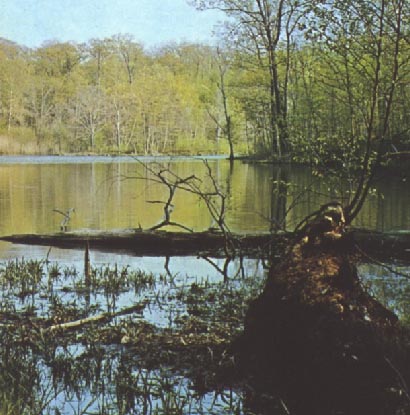
Figure 4. The pond in spring time.
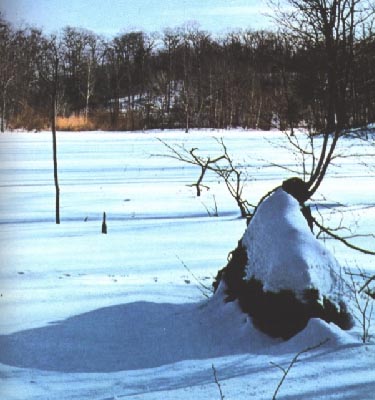
Figure 5. The pond during winter.
There is a description in this section about the many animals living in the pond and microscopists will find themselves delighted reading about phytoplankton and microscopic swimmers (protozoa) as the author shows us in detail the motile mechanisms of ciliates, flagellates and amoebas. In addition we learn how a fish breathes with a section dedicated to the mechanism by which fish pump water through their gills (see figure 6) in order to extract oxygen.
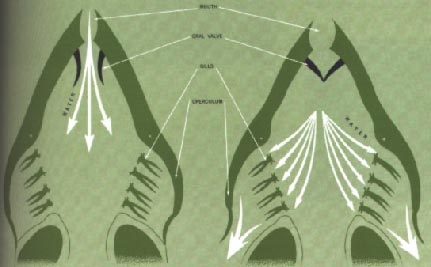
Figure 6. How water is pumped through the gills of fish.
Dr. Amos then takes us into a tour of the habitats within habitats or Worlds within Worlds, as the fourth section is entitled. Here we learn about the animals that live in different layers of the pond including those under the leaves of the water lily (figure 7), sand dwellers and plankton.
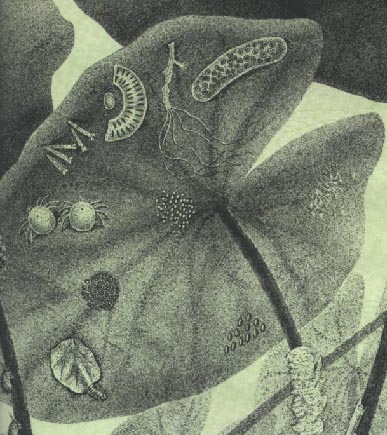
Figure 7. Drawing of life under a lily pad by William Amos.
Again the use of excellent drawings and photos well integrated into the text brings forward the main concepts on pond biology that the author wants to convey. As the fourth section ends and you think that the book has reached its end but the appendix follows almost as a fifth chapter with information on ponds in our national parks, a guide to pond animals, homemade ponds and a section of special interest to microscopists on exploring the microscopic pond world.
Not only is The Life of the Pond an informative and enjoyable reading experience, it is also an exceptional work of scientific communication that serves both the specialist in the field, the well informed layman and of course those of us who endeavor in the microscopic world. Dr. Amos has made an impressive use of images and drawings to illustrate this 1967 book 35 years in advance of what we have started to see in many of today’s science books with photos and illustrations that flow in an integrated and cumulative manner with the text. The Life of the Pond is definitely required reading for the amateur microscopist and for anyone interested in nature. Although unfortunately not in print anymore, copies of this book are available in most web based used booksellers.
I must acknowledge with gratitude the kindness of Dr. Amos in allowing me the use of photos and illustrations of his book for this review.
All comments to the author Guido Santacana are welcomed.
Editor's note: There are some excellent web sites to help source a used book. These include www.alibris.com and www.abe.com.